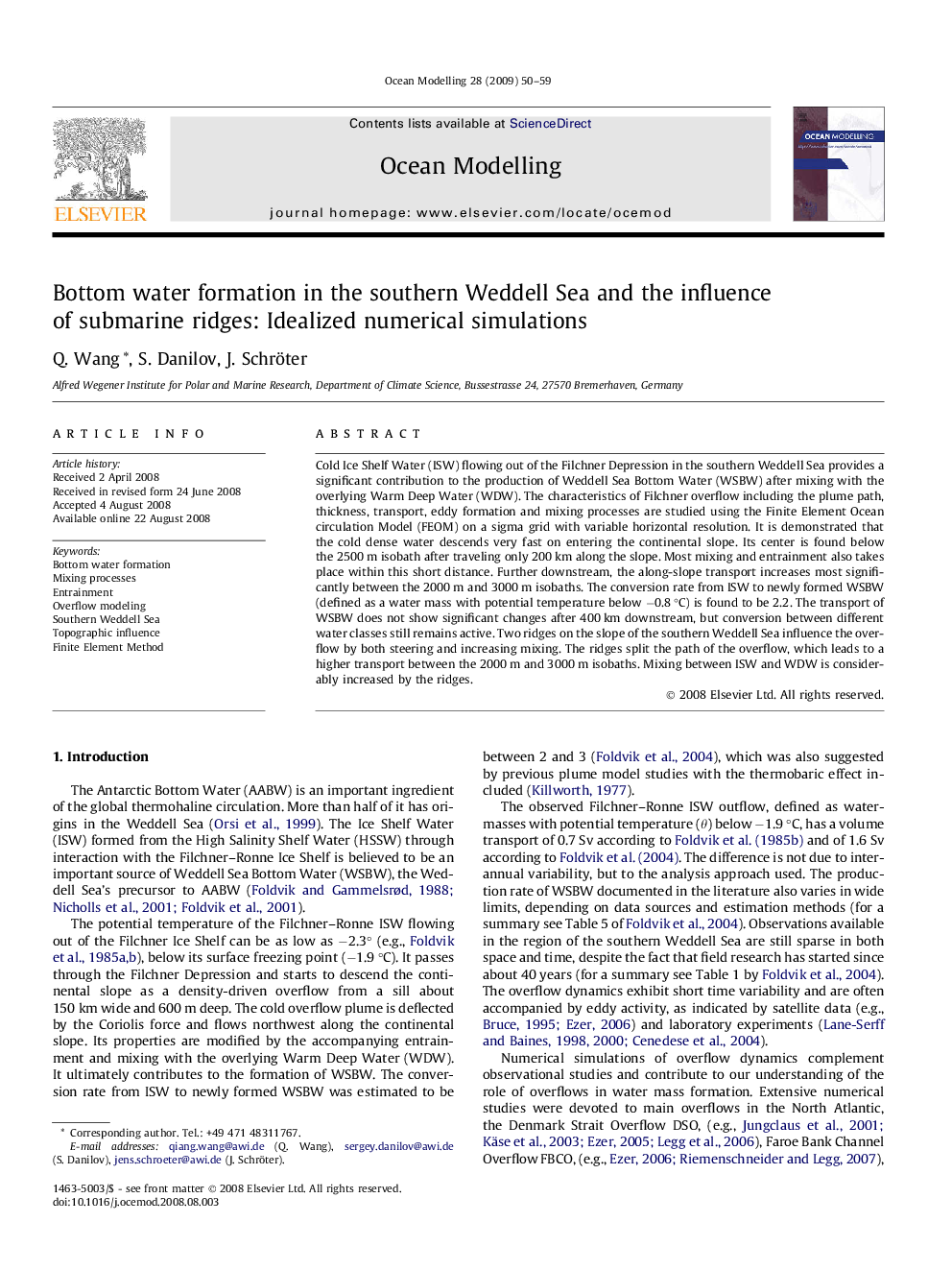| Article ID | Journal | Published Year | Pages | File Type |
|---|---|---|---|---|
| 4552617 | Ocean Modelling | 2009 | 10 Pages |
Cold Ice Shelf Water (ISW) flowing out of the Filchner Depression in the southern Weddell Sea provides a significant contribution to the production of Weddell Sea Bottom Water (WSBW) after mixing with the overlying Warm Deep Water (WDW). The characteristics of Filchner overflow including the plume path, thickness, transport, eddy formation and mixing processes are studied using the Finite Element Ocean circulation Model (FEOM) on a sigma grid with variable horizontal resolution. It is demonstrated that the cold dense water descends very fast on entering the continental slope. Its center is found below the 2500 m isobath after traveling only 200 km along the slope. Most mixing and entrainment also takes place within this short distance. Further downstream, the along-slope transport increases most significantly between the 2000 m and 3000 m isobaths. The conversion rate from ISW to newly formed WSBW (defined as a water mass with potential temperature below −0.8 °C) is found to be 2.2. The transport of WSBW does not show significant changes after 400 km downstream, but conversion between different water classes still remains active. Two ridges on the slope of the southern Weddell Sea influence the overflow by both steering and increasing mixing. The ridges split the path of the overflow, which leads to a higher transport between the 2000 m and 3000 m isobaths. Mixing between ISW and WDW is considerably increased by the ridges.
